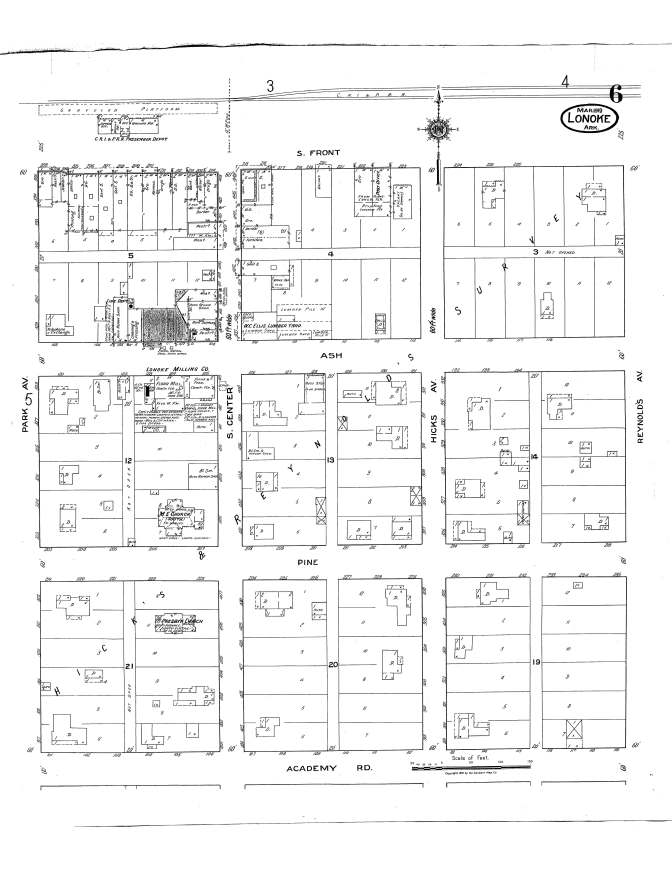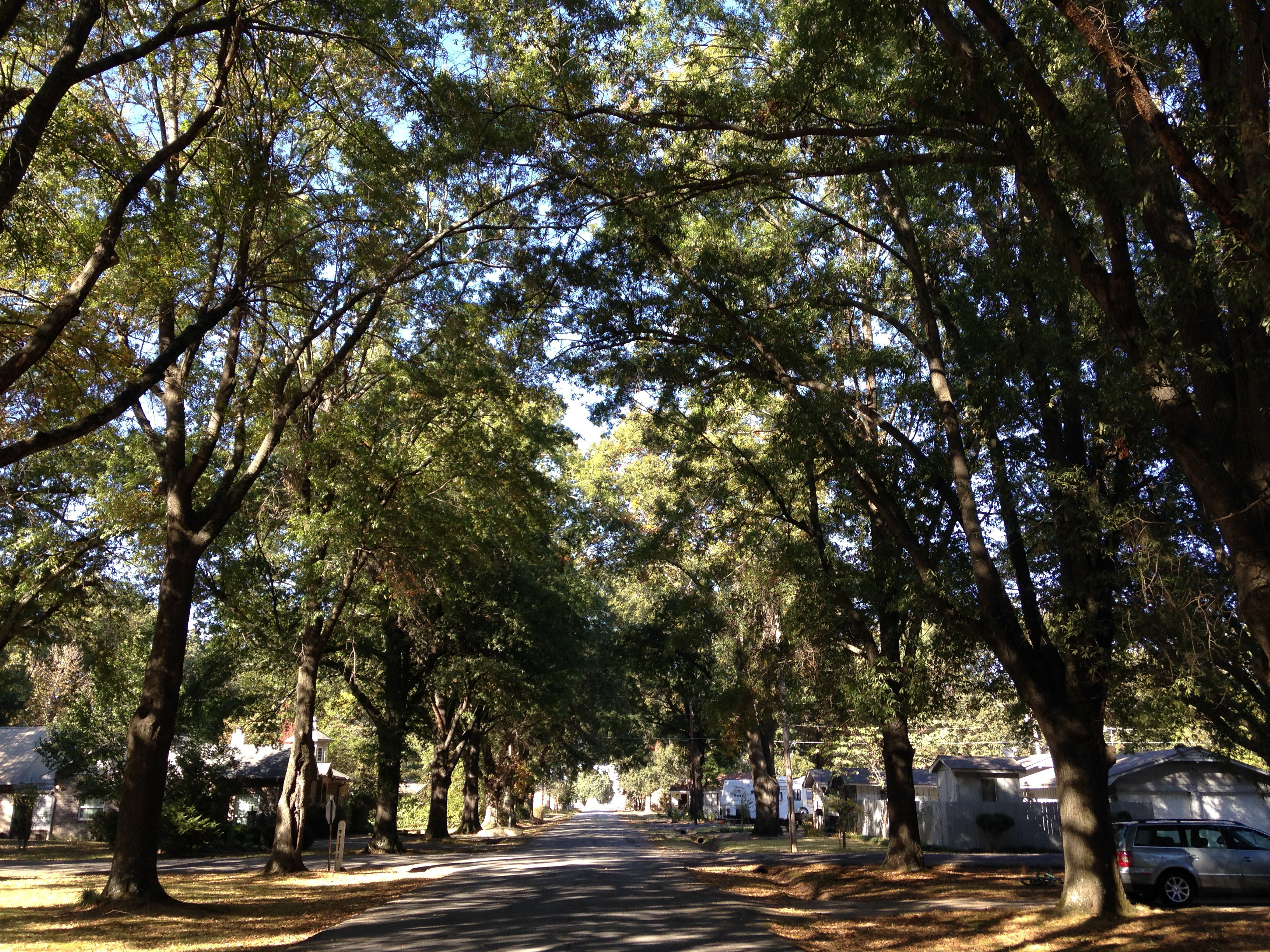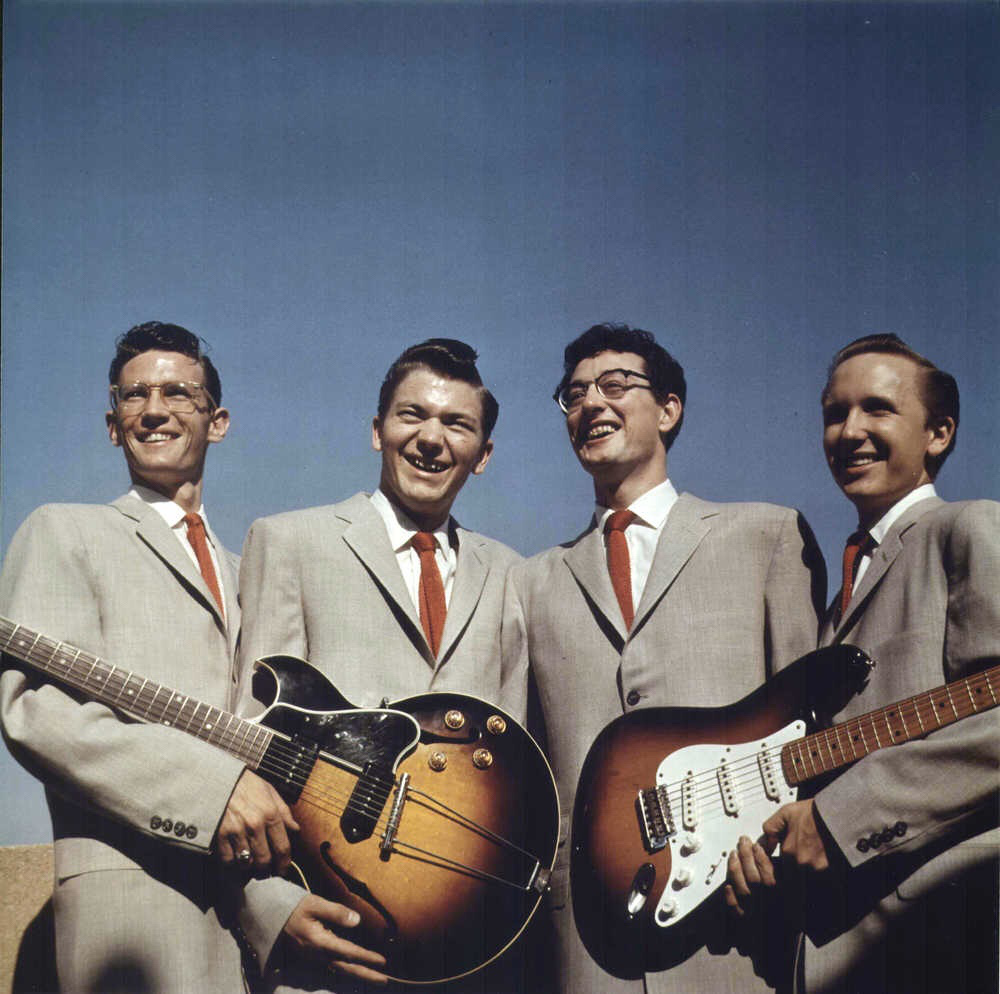Publication Note: This column was first published in the October 25, 2017 edition of the Lonoke County Democrat weekly newspaper, linked HERE in its original format. It is the 23rd installment of the “Look at Lonoke” column.
Lonoke is a town built on connective infrastructure, and has been since our founding.
Beginning with a railroad survey and a single oak tree, the heart of our community has grown from the first depot around what would become the intersection of Front and Center Streets. From the seeds planted by those who surveyed and platted our town, Lonoke’s traditional grid pattern of tree-lined streets has become a woven tapestry of intersecting paths, each corner an opportunity for interaction.
 1919 Sanborn Fire Insurace Map of Lonoke
1919 Sanborn Fire Insurace Map of Lonoke
This pattern is an important distinction that sets our town apart from generic suburban landscapes. Our streets are meant to be occupied by pedestrians, bicyclists, and neighbors of all generations. In effect, the design of our street system may enable exploration, outdoor activity, and strengthened connections between neighborhoods. Further, with carefully considered and prioritized improvements to our sidewalk system, Lonoke’s streets may fulfill their potential as truly connective assets.
Double tap if you agree with Margaret Mead. "Any town that doesn't have sidewalks doesn't love its children." #theglobalgridquotes
This past Monday evening, 68 citizens in Lonoke gathered to launch a five-year process of implementing a unifying vision, to be celebrated in the year 2022, when Lonoke marks the 150th anniversary of our town’s founding. These citizens and volunteers gathered because they care deeply about maintaining the special connection that we have as neighbors, recognizing that this connection is vital for the health and success of Lonoke’s next generation.
This vision of a more visible, attractive, and connected community expects that our town will assert a greater role in the economic vitality of our state and region, in large part, because of Lonoke’s unique contribution to the world in our aquaculture and agriculture-based economy. This begins by celebrating the connection to the rich, productive soil of the Grand Prairie in which we are rooted. In combination with the talents, creativity, and skills of our next generation of students and entrepreneurs in Lonoke, we may quite literally connect to the world by innovating in the ag-tech sector and becoming a hub for new ideas, platforms, and financial tools that serve this industry and the women and men who make it work.
Meet me at the #fish #pond #crossroads @lookatlonoke. #baitfish #business #drone #droneart #dronephotography
Our logistical position is also a positive asset, with close proximity to the state’s largest metropolitan area, Lonoke is in a place where we may cultivate key economic development relationships that enhance our understanding of our own strengths and Lonoke’s role in a larger regional focus. In much the same way that our hometown has historically been overlooked, our state is often similarly dismissed. With key thinkers and leaders now working tirelessly to reposition our state and the Delta more broadly as a region worthy of investment, it is important that Lonoke continually enlarge our influence in order that our current forward motion be leveraged for our town’s long-term strength.
With all of this potential on our horizon, is remains true that our most important points of connection are those between individual neighbors and neighborhoods. Our physical built environment should be enhanced to support these connections, with sidewalks and spaces along these sidewalks to share and experience life. We learn a lot about ourselves when we invite neighbors onto our porch who may arrive by a different cultural path or background. This is where our strength lies–in the commitment to continually add fibers to the tapestry of relationship.
Often, I step outside of the house and just look up. Our street has a particularly scenic canopy of decades-old willow oak trees, with soaring arbors of intertwined branches creating shade, shadow, and ever-changing light patterns throughout the revolving seasons. It struck me the other day that the only way to get a row of sixty-year-old trees is to plant them sixty years ago.
 Our street without sidewalks, under a connected canopy of intertwined oak branches, late fall 2017.
Our street without sidewalks, under a connected canopy of intertwined oak branches, late fall 2017.
Said in a different way, if those who come behind us are to live in a community that is mature, rich in history and culture, and connected by a well-maintained system of sidewalks, trails and safe streets developed incrementally over time, then we must invest in that vision today and stay on the path of continual improvement. Supported by an environment of mutual trust and interdependence, our next generation of leaders must have the courage to step up and step out today and build a bridge toward new friendships and partnerships that will last well into the future.
Ryan Biles and his wife Natalie have lived in Lonoke for over thirteen years, and are raising three sons to enjoy life in their hometown. Archives of this column with additional content are online at http://www.lookatlonoke.com .
Share this:





